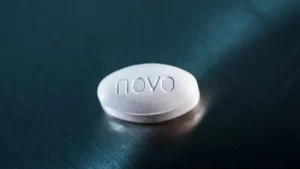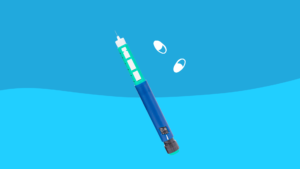Comparing Common Insulin Pen Brands: Types, Durations, and More
HOME | DIABETES EDUCATION | COMPARING COMMON INSULIN PEN BRANDS: TYPES, DURATIONS, MORE
When choosing an insulin pen brand for diabetes management, it’s crucial to understand the types, durations, and other essential attributes.
This insight helps individuals optimize their diabetes care.
Making an informed decision involves considering common insulin pen brands and their unique characteristics.
Key Takeaways
- There are various common insulin pen brands including Admelog, Humalog, NovoLog, and Apidra.
- Insulin pens come in different types, such as rapid-acting (NovoLog and Humalog), long-acting (Lantus or Basaglar), and premixed (combining rapid-acting and longer-acting insulin).
- The duration of action of insulin pens varies, with Tresiba having a duration of at least 42 hours, NovoLog Mix 70/30 and Humalog Mix 75/25 lasting up to 24 hours, and Humulin 70/30 having a mean duration of about 23 hours.
- The choice of insulin brand depends on individual factors such as lifestyle choices, blood sugar monitoring frequency, insulin dose requirements, and the desired duration of action for optimal diabetes management.
Common Insulin Pen Brands
Admelog, Humalog, NovoLog, and Apidra are common insulin pen brands that offer distinct formulations, durations of action, and in-use stability periods. These brands provide long-acting and rapid-acting insulin options.
For example, insulin glargine, marketed as Lantus or Basaglar, is a long-acting insulin that provides a steady level of insulin over an extended period. Insulin aspart (NovoLog) and insulin lispro (Humalog) are rapid-acting insulins that work quickly to lower blood sugar levels.
Additionally, insulin degludec (Tresiba) is another long-acting insulin option with a duration of action beyond 24 hours, allowing for flexible dosing time. Understanding the different formulations and durations of action is crucial when selecting the appropriate insulin pen for managing blood sugar levels effectively.
Types of Insulin Pens
Considering the distinct formulations and durations of action offered by common insulin pen brands, it is essential to explore the various types of insulin pens available to understand the options for managing blood sugar levels effectively.
- Rapid-acting insulin pens with an onset of 10 to 30 minutes.
- Long-acting insulin pens, such as insulin glargine and insulin degludec.
- Intermediate-acting insulin pens, like insulin isophane.
- Premixed insulin pens that contain a combination of rapid-acting and longer-acting insulin.
Understanding the different types of insulin pens is crucial for individuals and healthcare providers to make informed decisions regarding the most suitable insulin regimen for managing blood sugar levels effectively. Whether it is rapid-acting, long-acting, or intermediate-acting insulin, the type of insulin pen chosen plays a significant role in achieving optimal blood sugar control.
Onset and Duration of Action
The duration of action for various insulin pen brands varies depending on the type of insulin. For instance, Tresiba, a long-acting insulin, has a duration of action of at least 42 hours, providing a steady release of insulin over an extended period.
On the other hand, rapid-acting insulin pens like NovoLog Mix 70/30 and Humalog Mix 75/25 have durations of action of up to 24 hours, while Humulin 70/30 has a mean duration of action of about 23 hours. Understanding the duration of action of different insulin pens is crucial in managing blood sugar levels.
Longer-acting insulin pens may provide more stable basal insulin coverage, while rapid-acting insulin pens may be more suitable for managing post-meal blood sugar spikes. Selecting the appropriate insulin pen based on its duration of action is essential in meeting individualized insulin needs and achieving optimal blood sugar control in people with type 1 or type 2 diabetes.
Pen Needle Compatibility
Different insulin pen brands have varying durations of action for the type of insulin they contain. Here are the key points to consider for pen needle compatibility:
- Matching the pen needle with the specific insulin pen is crucial for safe and effective insulin administration.
- Some insulin pens offer flexibility in needle selection, accommodating a wide range of pen needles.
- Manufacturers provide specific recommendations for compatible pen needles, and it’s essential to follow these guidelines for proper use.
Understanding pen needle compatibility is vital for individuals managing their insulin therapy, as it directly impacts the delivery of the prescribed insulin dose and influences blood sugar levels. Choosing the right pen needle compatible with the insulin pen is a critical aspect of successful insulin injection.
Factors Influencing Choice for Brands of Insulin
When choosing insulin brands, individual response, lifestyle choices, willingness to administer multiple injections, and frequency of blood sugar monitoring play a significant role in the decision-making process. The type of insulin, such as long-acting insulin (insulin glargine, insulin degludec) or rapid-acting insulin (insulin aspart, insulin lispro), influences the choice of insulin pen.
For individuals preferring flexibility, an insulin pump may be more suitable than traditional insulin pens. Additionally, the required insulin dose and the individual’s ability to manage it may impact brand selection. It’s crucial to consider the duration of action of the insulin, aligning it with the individual’s lifestyle and daily routine for optimal diabetes management. These factors collectively guide the choice of insulin brand, ensuring personalized and effective diabetes care.
Dosing Schedules; Taking Insulin
Insulin dosing schedules are crucial for managing blood glucose levels. The timing of insulin administration should be coordinated with meals to match glucose absorption with insulin onset.
The dosing schedules differ based on the type of insulin. Rapid-acting insulin should be taken about 15 minutes before a meal, short-acting insulin 30 to 60 minutes before a meal, and intermediate-acting insulin up to 1 hour before a meal.
Long-acting insulins like detemir and glargine are not tied to mealtimes and can be taken once or twice a day. Rapid-acting insulin can be taken right after a meal or at bedtime. Adhering to these schedules is essential for effective insulin therapy and maintaining stable blood sugar levels.
Insulin Pen Administration
Administering insulin via a subcutaneous injection is an essential aspect of diabetes management, and insulin pens provide a convenient and precise method for delivering insulin. The table below outlines the administration times for various insulin pen options, including Lantus, intermediate-acting insulin, Toujeo Max Solostar, and smart pens for short-acting insulin.
These pen options offer flexibility and ease of use for individuals requiring insulin therapy. Understanding the administration times of different insulin products can help individuals make informed decisions about their diabetes management.
| Insulin Pen Options | Times |
|---|---|
| Lantus | Administration Times |
| Intermediate-Acting Insulin | Administration Times |
| Toujeo Max Solostar | Administration Times |
| Smart Pen for Short-Acting Insulin | Administration Times |
Insulin Injection Pen Storage
Proper insulin pen storage is crucial for maintaining effectiveness and ensuring medication safety. Consider the shelf lives of insulin pens and adhere to the manufacturer’s storage guidelines. Protect insulin from extreme temperatures and direct sunlight. Keep extra insulin in the refrigerator and allow it to warm up before use.
Follow specific storage instructions for inhaled insulin to ensure effectiveness. Adhering to recommended storage guidelines is crucial for maintaining the efficacy of insulin pens.
Injectable Insulin Characteristics
Injectable insulin pens like Humalog, Novolog, and Apidra contain rapid-acting insulin analogs suitable for postprandial glucose control. On the other hand, long-acting insulin pens like Lantus, Levemir, and Tresiba provide a basal level of insulin over an extended period, addressing the body’s insulin needs between meals and overnight.
Factors influencing insulin type selection include blood sugar levels, insulin resistance, and potential side effects. Long-acting insulin analogs play a crucial role in managing insulin needs, especially in individuals with type 2 diabetes.
Understanding the characteristics of different insulin types is vital for tailoring insulin regimens to individual needs and achieving optimal blood sugar control.
Inhaled Insulin Storage
Inhaled insulin should be stored at room temperature for up to 10 days after opening. Unopened insulin cartridges should be stored in a refrigerator between 36°F and 46°F. Protect inhaled insulin from extreme temperatures and direct sunlight. Check the manufacturer’s instructions for specific storage requirements for different inhaled insulin brands.
Insulin Side Effects
Insulin side effects may include low blood sugar, initial weight gain, lumps or scars at injection sites, and occasional rash. Inhaled insulin can cause sudden tightening of the lungs in individuals with asthma or COPD. It is important for insulin users to be mindful of these potential effects and to discuss any concerns with their healthcare providers.
Understanding the side effects associated with different insulin types, including rapid- or short-acting insulin, is essential for effective diabetes management. Proper education and awareness can help individuals mitigate these side effects and optimize their insulin therapy.
Types of insulin. Insulin is grouped according to how long it works in the body. Rapid- or short-acting insulin helps reduce blood glucose levels at mealtimes and intermediate or long-acting insulin helps with managing the body’s general needs. Both help manage blood glucose levels.
https://www.betterhealth.vic.gov.au/health/conditionsandtreatments/diabetes-and-insulin#
Selecting the Right Insulin Pen
When choosing the right insulin pen for diabetes management, factors such as individual response, lifestyle, willingness for multiple injections, blood sugar monitoring frequency, age, and goals for managing blood sugar are essential. Understanding the specific insulin needs, whether it is rapid-acting, short-acting, intermediate-acting, or long-acting, is crucial for choosing the right pen.
Matching the insulin duration with the individual’s lifestyle and meal patterns is important for effective blood sugar control. For tech-savvy individuals, smart insulin pens with dose memory and Bluetooth connectivity for tracking insulin injections and glucose levels may be beneficial.
Considering the availability and familiarity with common insulin pen brands can ease the transition for new insulin users or when switching from vials and syringes. Selecting the most suitable insulin pen involves careful consideration of various factors to ensure effective diabetes management.
Frequently Asked Questions
What Are the Different Brands of Insulin Pens?
Insulin pen brands: Admelog, Humalog, NovoLog, and Apidra offer various formulations, onset and duration of action, and pen needle compatibility.
Which Insulin Products Have the Longest Duration?
Tresiba has the longest duration of action, lasting at least 42 hours. This information is crucial for individuals and healthcare providers to make informed decisions regarding insulin therapy plans.
What Are the Different Classification of Insulin Pens?
Insulin pens are classified as rapid-acting, regular- or short-acting, intermediate-acting, long-acting, and subtypes like ultra-long acting and premixed. These classifications cater to different insulin delivery methods, and individual patient needs are crucial in determining the appropriate type.
Which of the Following Insulins Has the Longest Duration?
Tresiba has the longest duration of action among the insulin options, lasting at least 42 hours.



